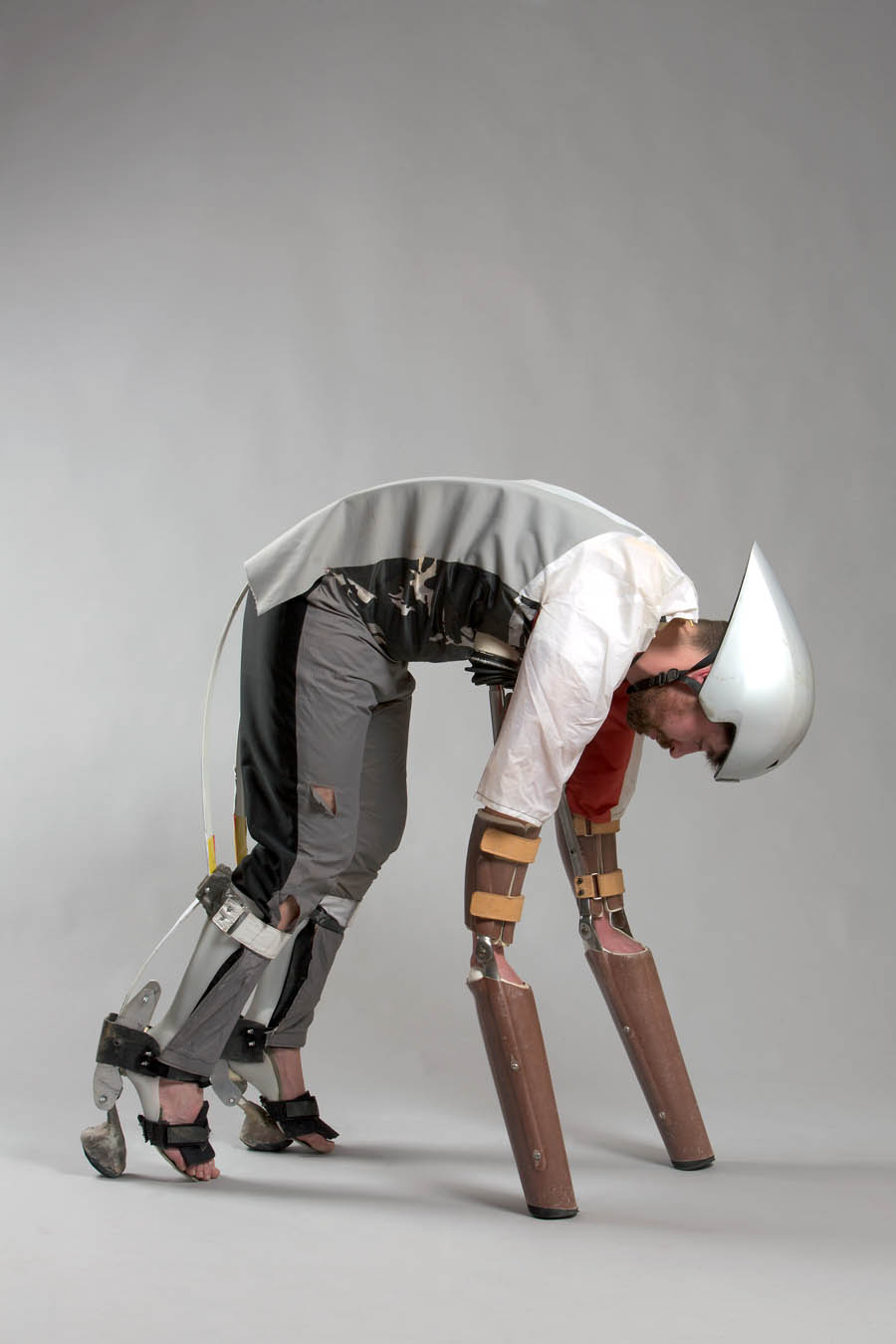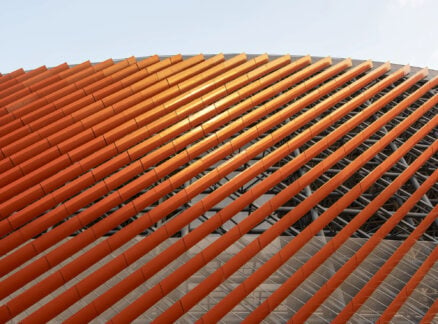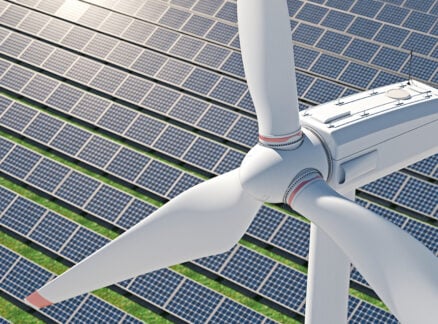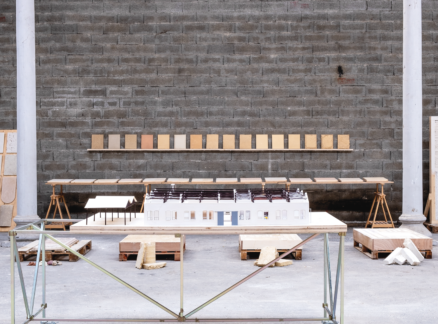
December 16, 2019
Humans Must Be Displaced From the Center of Design
In probing the relationship between humans and nature, two major exhibitions question the very foundations of design practice.
What was the environmental impact of writing this article?
Some considerations are obvious. Humans reached into the earth to extract ores that had to be pulverized, refined, smelted, melted, and then cast or drawn to make the thousands of metallic parts for my laptop. Petroleum gushed through pipelines somewhere (maybe even as a war or two were fought over the oil) to end up not only as the plastic keys on my keyboard but also the fuel consumed by the truck that ferried my laptop to me. I’ve accounted for the power that flows into my laptop, guiltily noted the fluorescent light over my desk, and considered those appliances’ energy sources, renewable or not. Then there’s the energy that fueled my thoughts and my typing fingers—derived from plant parts cooked in a metal pan over burning fossil fuels.
Even as my exhausted brain was trying to imagine the embodied energy of my poor frying pan, I discovered a fact that made me cry out loud. Researchers at the University of Massachusetts Amherst have estimated that in order to create an algorithm like the one that puts a squiggly line under my misspelling of the word fluorescent, Google generated a footprint equivalent to the full lifetime emissions of five gas-guzzling, smoke-belching cars.
Many of us have engaged in this kind of environmental self-excoriation with similarly depressing results. In the face of the global challenges of climate change, even the relatively simple act of writing can feel exploitative. How much more extractive and cruel must the complex actions of designers be, as they organize information, imagine artifacts, arrange spaces, erect edifices, and plan cities? In response to this overwhelming guilt, I see a full range of emotions in the architects and designers I meet every day, from grim resolve to utter paralysis. There are a dozen different road maps promising ecological salvation, but on a dark day even committing to The 2030 Challenge and giving up plastic straws can seem but a temporary salve.

So it’s no surprise that the relationship between humans and nature came under scrutiny at a number of high-profile design events and exhibitions this year, the two most ambitious being Broken Nature: Design Takes On Human Survival at the Triennale di Milano in Italy and Nature—Cooper Hewitt Design Triennial at the Cooper Hewitt, Smithsonian Design Museum in New York.
With 62 projects, the Cooper Hewitt show, which was developed in collaboration with the Cube design museum in the Netherlands, was the smaller of the two, but had a decidedly more optimistic point of view. “The questions, speculations, provocations, and solutions put forth by the extraordinary design teams herein serve as encouragement for an enduring partnership with nature,” writes curator Matilda McQuaid in the show’s catalog. Over in Milan, Paola Antonelli, who marshaled some 100 design projects and coordinated with curatorial teams from 23 countries, isn’t entirely sure that such a “partnership” is feasible, or that it would be enduring. The astonishing and seemingly oxymoronic conclusion of her catalog essay: “Our only chance at survival is to design our own beautiful extinction.”
A few designers are represented in both Milan and New York, and in one case the curators even selected the same project. It is a sure sign of the design profession’s bipolar state, then, that designers dismantling the entire project of modern civilization in one exhibit are presented as messiahs of hope in the other.
Take the work of data visualization genius Giorgia Lupi. At Broken Nature, visitors were greeted by Lupi’s The Room of Change—three walls covered in what appears to be rather anodyne wallpaper. But on perusing the legend at the center of the room, they realized the pattern was a “data tapestry” recording global change in the relationship between humans and nature between 1000 B.C. and a speculative A.D. 2400. Dots, dashes, lines, and blocks appear and fade as world population shifts, sea temperatures change, chemical elements are discovered, and animal species die out in South America. The project is relentlessly analytical, comprehensive, and impersonal.
At the Cooper Hewitt, though, Lupi’s work is more intimate. For Bruises—The Data We Don’t See, she and her collaborator, the musician Kaki King, tracked 120 days in the life of King’s daughter, who has an autoimmune disease. In their beautiful data visualization, petals bloom along a “fluid timeline,” each representing a day in the three-year-old’s life. Dark patches mark the appearance of bruises on the child’s skin; red dots represent platelet counts from blood tests. Yellow circles denote days when mother and daughter felt hopeful. It captures the nature and experience of illness as no medical record ever has, and teaches us something new about being human.
As McQuaid reminds us in the Cooper Hewitt catalog: “We are nature.”
This is not to be read as egotism but rather an acknowledgment that there is no part of humanity that exists outside nature. There is no Archimedean spot where designers can stand and, using some methodological fulcrum, move the world out of the path to apocalypse. That is the daring thesis at the heart of both exhibitions: For far too long design has subscribed to a worldview that casts humans as the superior species on this planet, in fact the only species capable of shaping its environment. That ontology has led to our current sorry situation. Lupi’s projects enrich our understanding of the things humans generally care about, like pain, suffering, or the depletion of the resources our civilization depends on. That is well and good, to the extent that humans form an important aspect of this planet’s ecology. But what of the rest?

This is why London designer Thomas Thwaites’s project GoatMan was featured among the many projects highlighted in the two shows. For three days, the designer took “a holiday from being human” and roamed the slopes of the Alps with a herd of goats—as one of them. Thwaites went to extraordinary lengths to attempt this transformation, building himself an exoskeletal “goat suit” and eating grass. The methodology is not new: In the 1970s, National Design Award winner Patricia Moore wore vision obscuring glasses and a bodysuit to try to understand the sensory experience of being an older person. But Thwaites has extended this quest for empathy to nonhumans, and that is precisely what both exhibitions argue we have to do in order to design ethically in this world. There is no getting around it; human beings must be displaced from the center of design. McQuaid calls for a collaboration on more equal terms with nature, while Antonelli says: “The notion of good in design today must also involve ethical responsibility, particularly of the interspecies kind.”
It’s a hard lesson to learn, and a harder one to implement in daily life. For instance, while I can begin to grasp the ecological footprint of producing this article, and even its social value, I have no real sense of its bearing on nonhumans and the nonsentient aspects of this planet. So on balance, am I doing more good than harm? I cannot tell. After seeing Broken Nature and Nature—Cooper Hewitt Design Triennial and engaging with the fine pieces of thinking that two sets of designers, curators, and commentators have produced, I’m left with the French philosopher Bruno Latour and his clarification of the concept of Gaia—which most people understand as some kind of New Agey world consciousness. Conceived and developed by James Lovelock and Lynn Margulis, Gaia is “neither a big thermostat nor a superorganism, a sort of successor to the Mother Earth,” as Latour puts it. Rather, Gaia refers to the systems and relationships that emerge as the billions of living beings on Earth act in relation to one another. “Taking on board such a world had nothing to do with ecology, but quite simply with a politics of living things,” Latour says.
Understanding the earth as a giant political system, rather than a spaceship or a rock or any of the metaphors that have been offered by design thinkers, is a powerful reconception. What if every piece of life and nonlife—flora and fauna alongside rocks, seas, soil—had a vote in the future of our world? Perhaps, as the Cooper Hewitt show suggests, there would be some kind of bipartisan agreement (or a coalition if it is a parliamentary system), where the whole earth contributes to a new form of design. Or the world might vote against humans and all our creative endeavors, be they designing or writing articles on design. Then one has to agree with Antonelli: The only honorable thing would be to make our end as beautiful as possible.
You may also enjoy “This Exhibition Aims to Capture the Diversity of Human Health”
Would you like to comment on this article? Send your thoughts to: [email protected]
Recent Viewpoints
Viewpoints
Sustainability News Updates for Q2 2025












